Pelargonium rosebud: description of varieties and features of care
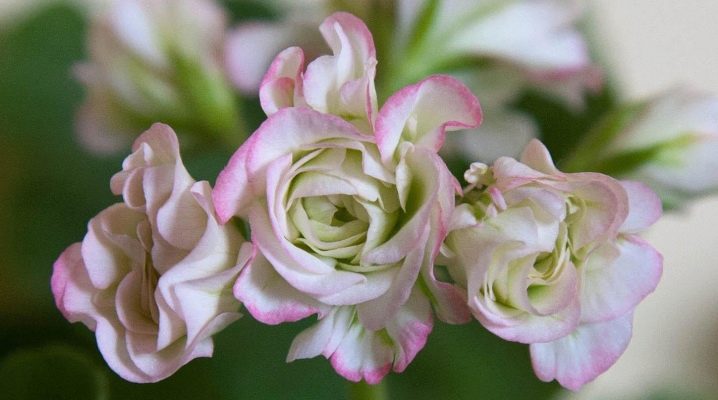
Pelargonium rosebud in its appearance resembles a shrub rose. Rosebuds are called hybrid varieties of this plant with lush buds. To get this luxury at home or in the garden, you need to properly care for the flower.

Description
Pelargonium rosebud flower growers are often called geraniums. These are indeed plants from the same family, although they do not resemble each other either in leaves or the main decorative part.
Wild geraniums can be seen in the forest. She attracts attention with modest blue flowers. There are also special varieties for the garden with flowers ranging from white to almost black (through the red spectrum). The plant is cold resistant.
Pelargonium is a resident of the southern regions. In Russia, she often lives indoors. Balconies and verandas are decorated with it only for the summer.
And even if they are planted in the ground, by the end of the warm season they are returned under the roof.

Blossoms with beautiful umbrellas. You can find a green beauty with white, pink or deep red buds. She does not have blue flowers. The bush reaches a height of 80 centimeters.
The similarity between pelargonium and geranium is that they have nearly identical seed pods.
Pelargonium rosebud appeared in the 19th century on the territory of Europe due to a mutation. The fashion for growing such wonderful roses originated in England. They were used to make bouquets. At the same time, amazing bushes were brought to Russia.
There are about 250 types of pelargonium. They are subdivided:
- on ampelous - with flexible stems that hang down beautifully or curl along the surfaces;
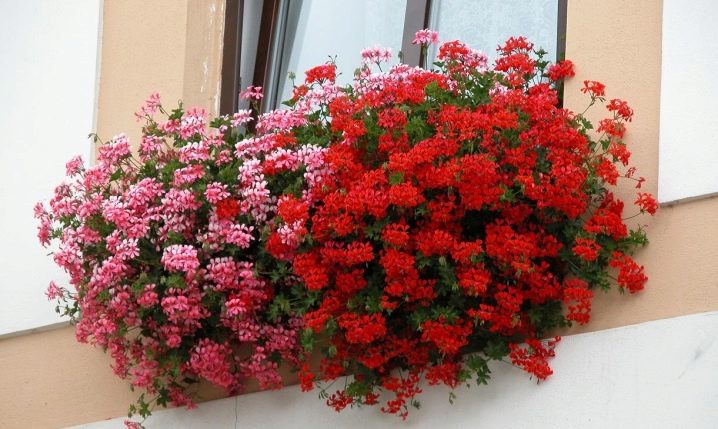
- zonal - straight bushes with dense foliage and small flowers;
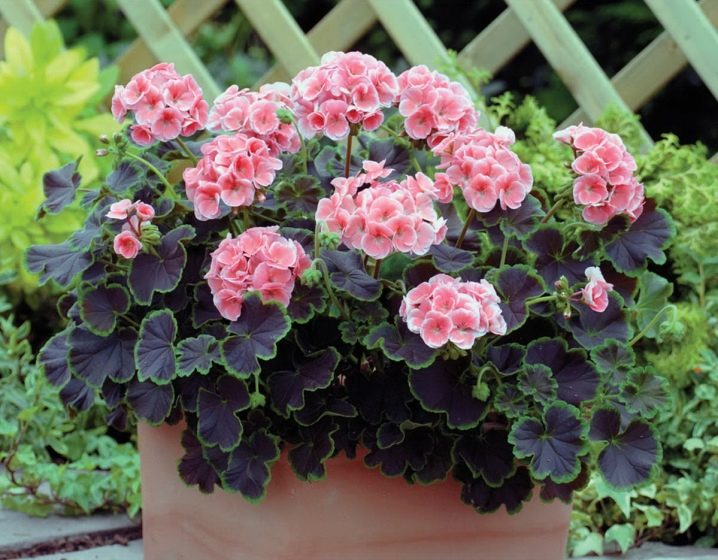
- dwarf - plants of small size, most suitable for use in the house;
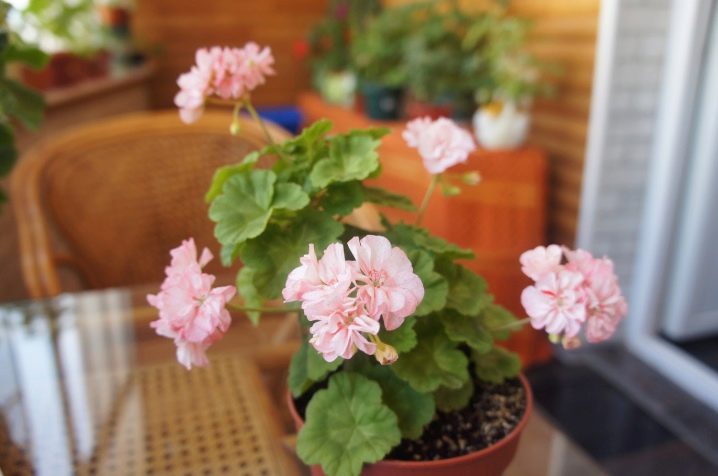
- ivy hybrids that combine the properties of all three varieties.
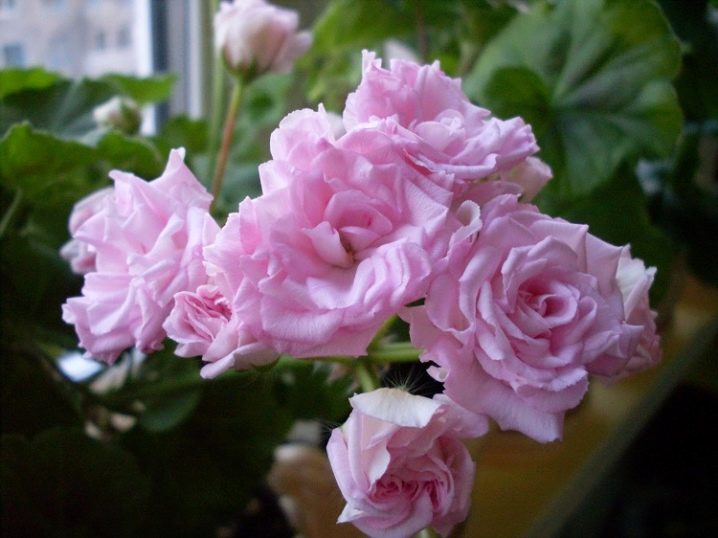
Among the brightest and most popular varieties, the following can be distinguished.
- Vectis Rosebud. A miniature-looking shrub with clusters of small roses of a bright red hue. It blooms luxuriantly for several months. Allows you to easily form a crown.

- Pink rambler. A strong-looking bush with corrugated leaves and flowers of a rich pink hue. The petals are beautifully shaped, lighter from the inside out. Easy to care for, pleases with the beauty of its buds throughout the warm season.
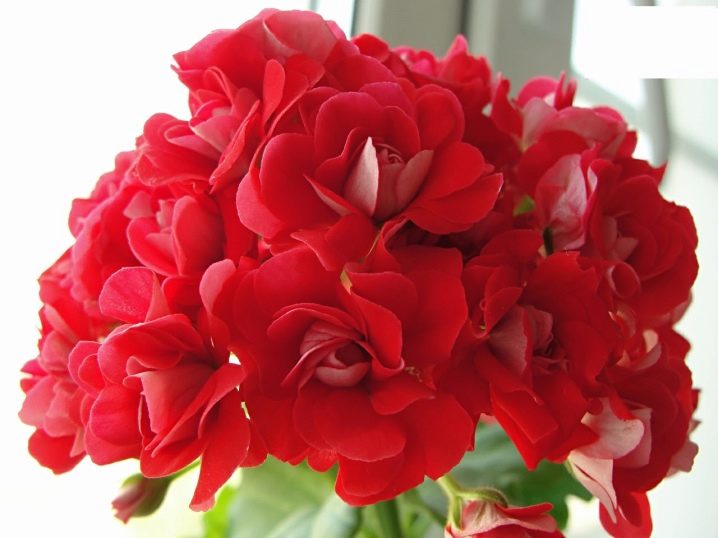
- Monseruds Rosen. Blooms in red flowers with a purple tint. Because of this color, the buds give the impression of being heavy and rich in appearance. There are also Monseruds Rosen with white dots on the petals. This variety is not easy to grow because it has many side shoots. Crown formation requires constant attention.
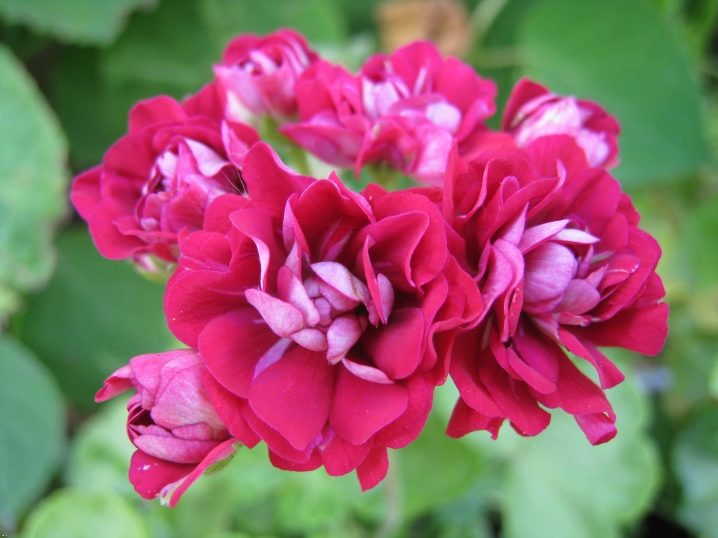
- Apple Blossom. It is a perennial bush, on the tops of which beautiful dense umbrellas of white double flowers with a pink border grow. The bush grows rapidly. It needs to be pruned constantly. If this is not done, the shoots begin to stretch out strongly, losing foliage. Because of this, the plant loses its attractiveness.
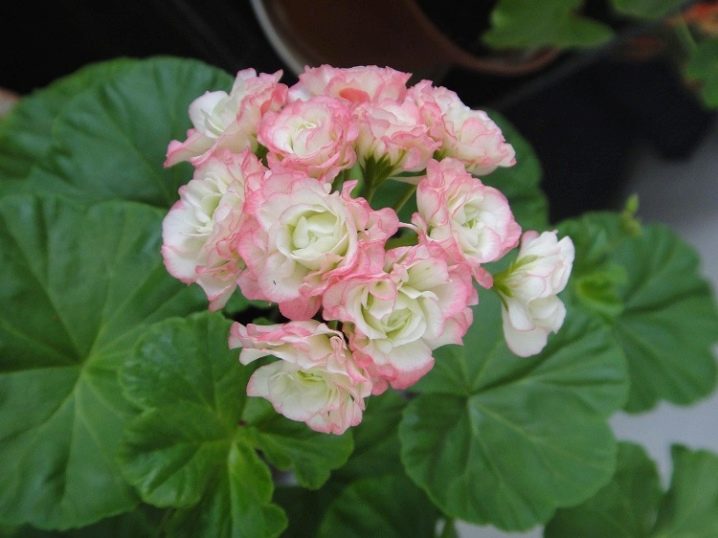
- Supreme. Blooms late in lush red bouquets of small roses. The bush is not difficult to care for and easily lends itself to crown formation.

- Millfield Rose. Hybrid pelargonium with large pink buds, collected in dense inflorescences. It is often used for landscaping, as it tolerates temperature changes well. It begins to bloom in the second year of life.

- Unicorn zonartic rose... It is a compact bush with large - up to 8 cm - double pink-red flowers. The variety is unpretentious, the bushes provide lush flowering.
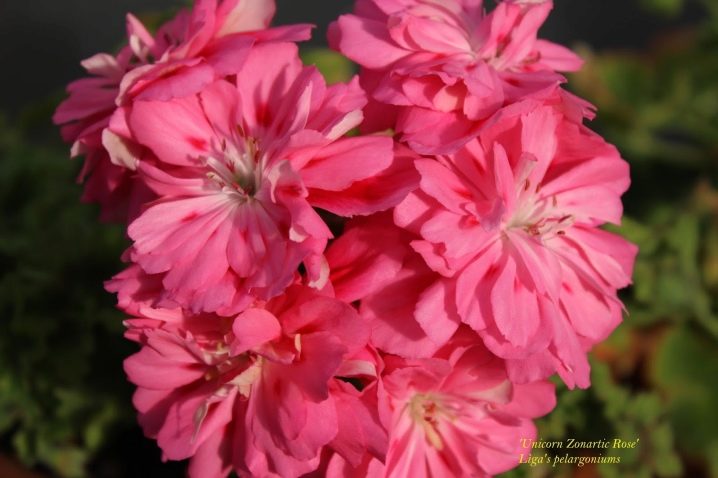
- Jubilee Rose. The petals of a rich purple or fuchsia color resemble corrugated paper with wavy edges in their texture. This pelargonium pleases with colored voluminous caps of lush flowers. The plant itself looks like a sturdy bush with leaves closely spaced to each other.
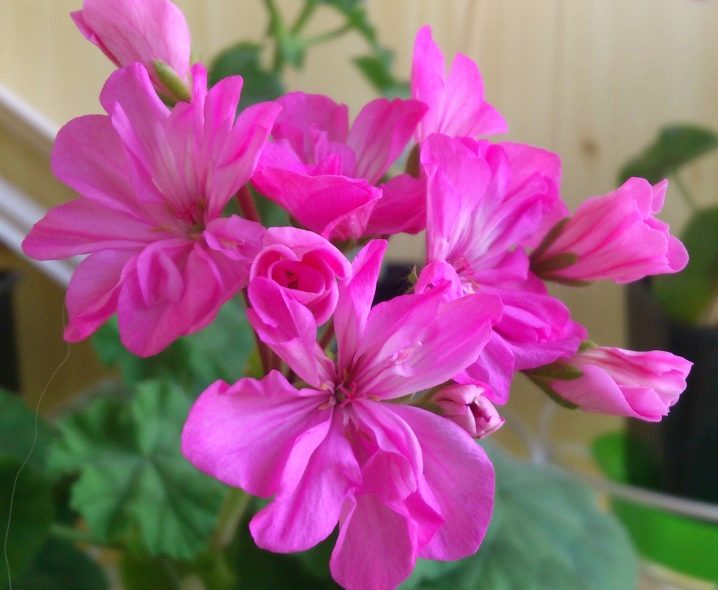
- Ice Rose. A deep green bush with shiny thick leaves. It grows slowly. White roses reach 6 centimeters in size.
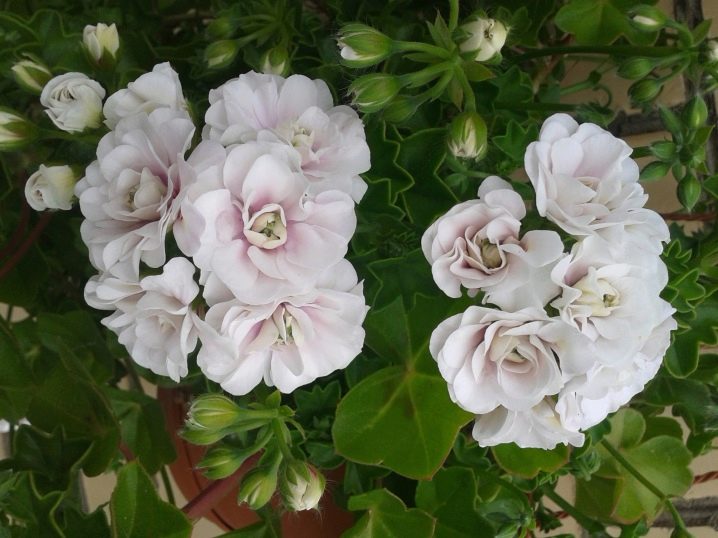
- Grainger's Antique Rose. A plant with rounded leaves characteristic of pelargonium. It blooms with large roses of extraordinary appearance with a silky texture, collected in beautiful hats.
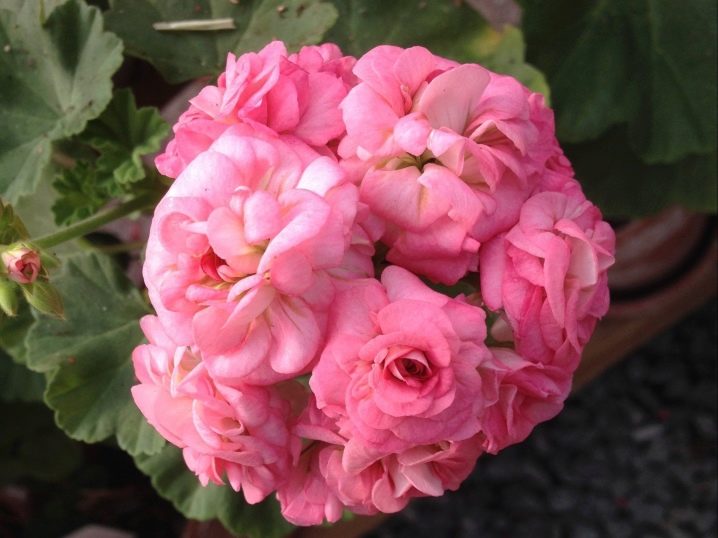
- Brookside Rosa. Unusual miniature zonal bush. It has bright leaves and rich pink petals. It grows and bushes quickly. Therefore, you need to cut off the stretching shoots in time.
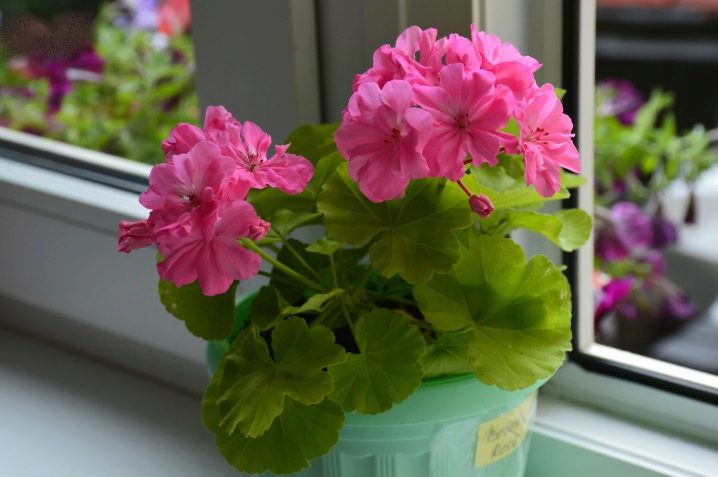
- Australian pink rosebud. A hybrid that appeared in Australia through the efforts of local breeders. The plant resembles a real bush rose and requires gentle handling. He has pink buds of the correct shape, as if not fully opened. The leaves of a rich green color serve as an excellent frame for the roses themselves, collected in large inflorescences.
In appearance, the bush is strong, with a large number of lateral shoots.
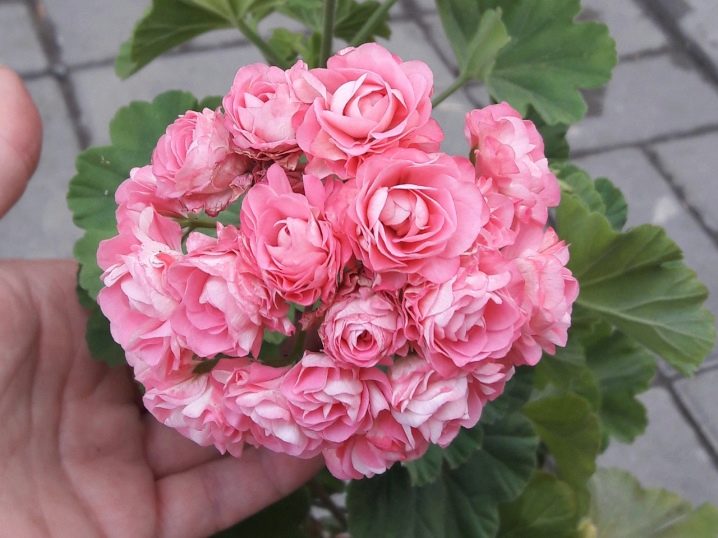
- Marbacka Rose. The plant stretches quickly as it grows, does not need pruning and does not require much effort to keep it healthy. The fluffy flowers, collected in large clusters, have pink buds of a delicate shade, as well as having a tone close to skin tone. Such pelargonium blooms almost continuously, it easily takes root.
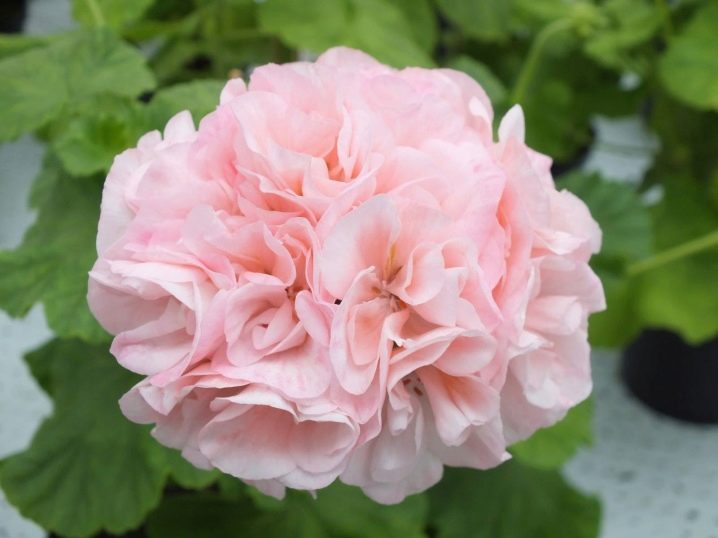
- "Night Rose". It is a bush about 30 centimeters high. The leaves are brown. Pink-purple buds are collected in large spherical inflorescences. If properly cared for, pelargonium will delight with flowering all year round.

- Milfield Rose. It is a bush with voluminous and heavy-looking pale pink buds, similar to real roses. The stems of the plant branch, they have many leaves. This variety is in great demand among flower growers.
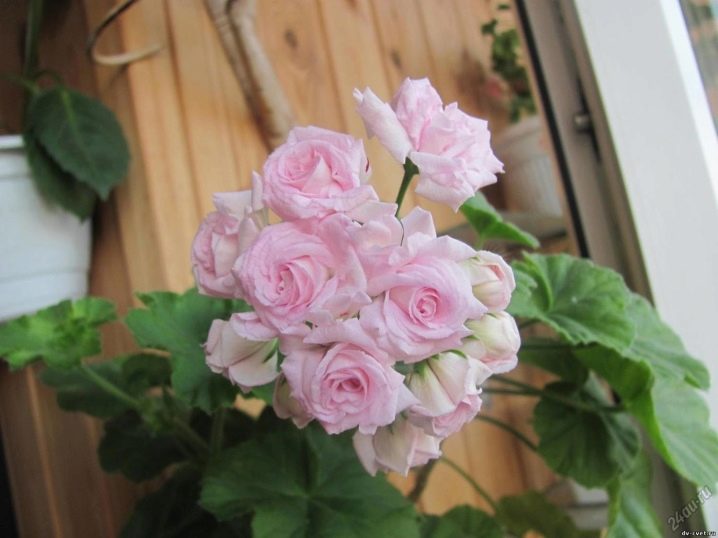
- Bornholm. A massive bush with bright red double, like satin, buds, collected in beautiful brushes. The petals unfold slowly and not completely. But the flowers that have appeared delight with their appearance for a long time. The plant requires close attention, since if it grows strongly, it will not be able to bloom.

- PAC Viva Carolina. Very beautiful pelargonium with large pink buds. Some hybrids have transitions in the shades of the petals - lighter in the middle than along the edge. Flowering lasts a long time and is splendid. From a distance, the flowers look like real roses.
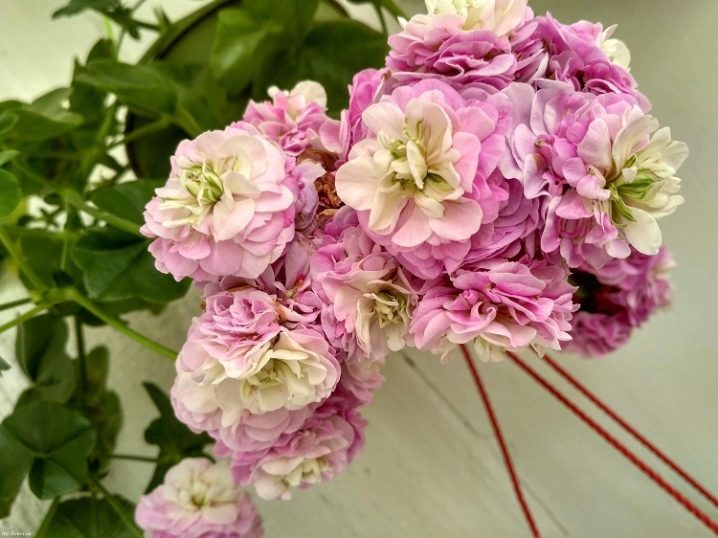
- Denise. A well-known variety, whose representatives show the world two-colored, not fully opened buds - the white color in them gradually turns into bright pink. A lot of buds appear. They are collected in neat bouquets. The bush is not very tall, but strong.
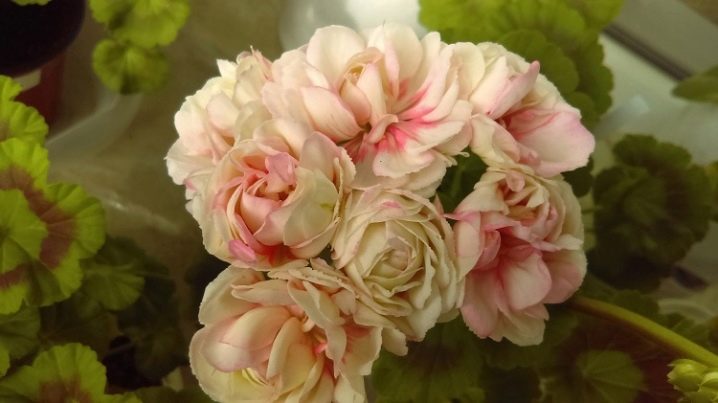
- Queen Ingrid. It is a tall bush with large, dense balls of double flowers in many shades of pink and cream. The plant provides abundant flowering.

- Anita. The bush reaches a height of half a meter. The leaves have a light shade and texture with a slight ripple effect. Flowers delight with balls of dense pink buds. These flowers do not fully open, resembling classic garden roses. The variety does not require much processing effort. Frequent pruning is not required.
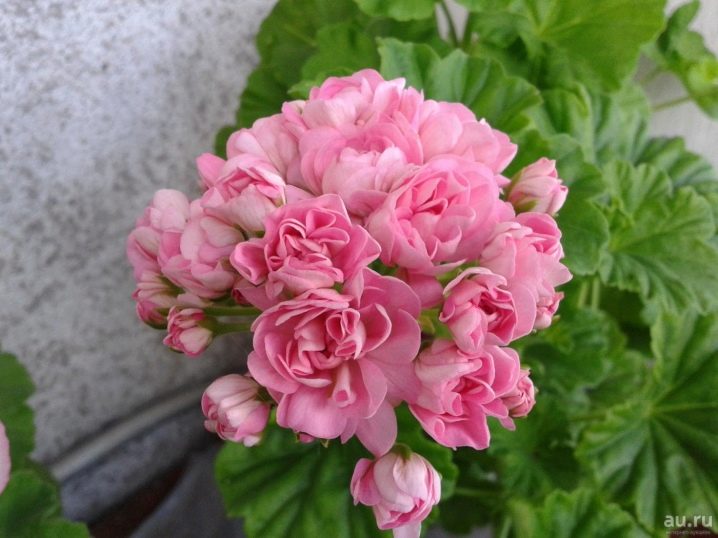
- Achievement. The buds of this pelargonium are soft and silky to the touch. They have a pleasant shine. They consist of many petals, slightly curved along the edge, opening strongly during flowering.
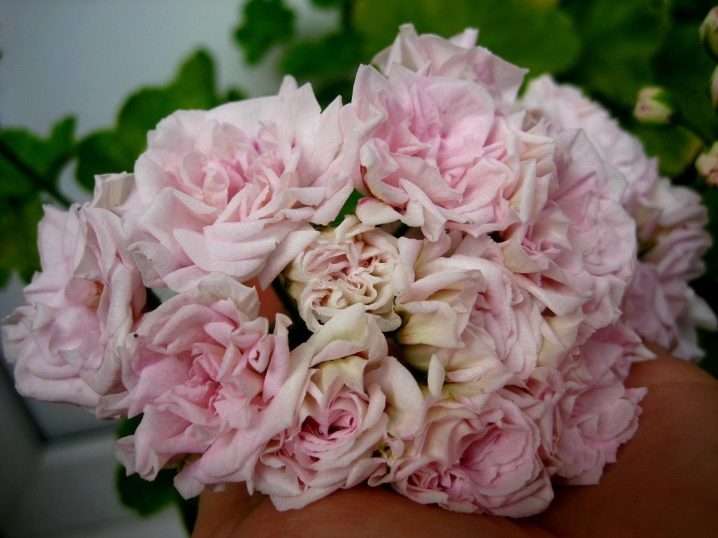
Landing
In order to plant an adult plant on a site for a warm period, you need to do this by the transshipment method. That is, remove the entire clod of earth, captured by the roots, from the pot and plant it in the ground.
Before starting the planting process itself, you need to cut off the shoots that are strongly branching. Days in February and early March are suitable for such work. After the procedure, the pelargonium is placed on the sunny side, they begin to water more often (preferably in a tray). The disembarkation is done when the real warmth comes.
If the bush remains at home, it still needs to change its habitat, since the available soil is depleted.
Planting works in the new land are carried out in April.

You can buy fresh soil for pelargonium in the store or make a suitable composition yourself. The substrate is prepared from a mixture of peat, perlite, sand, turf, humus.
In order for a new beautiful plant to appear in the house or in the garden, cuttings are planted, which are cut from March to July. You can take a half-stiff one and containing up to five internodes. The leaves are removed, and the cut is dried for half an hour.
A mixture of soil and vermiculite suitable for pelargonium is best suited for planting.
Before the procedure, they are mixed in equal proportions.
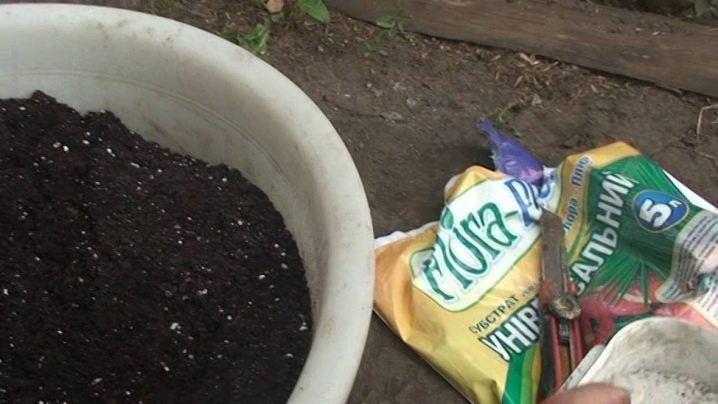
The pot is pre-disinfected. The container size should be slightly larger than the roots. If the dishes are too large, you will not wait for flowering, but in a small one, pelargonium will wither.
After planting the cuttings, light watering is carried out at regular intervals. After 3 weeks, the stalk will take root. This will be indicated by new shoots that have appeared on it. When the bush grows, you can give it symmetry by pruning.
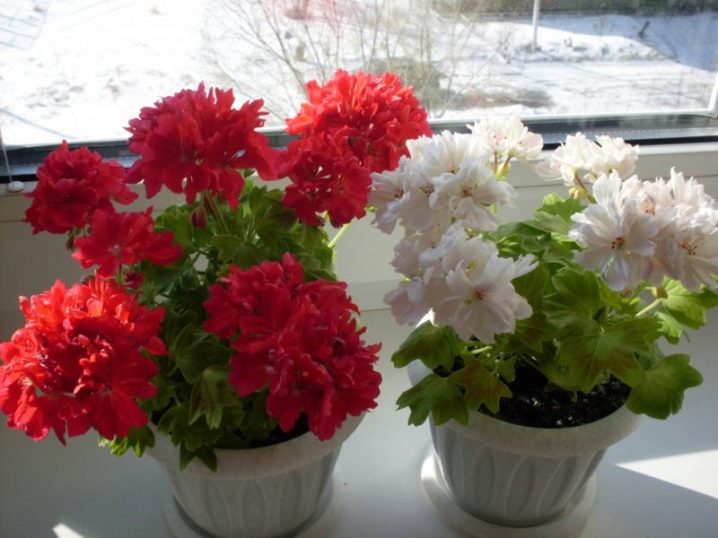
Care
If the bush grows in open ground, you need to water it when the soil underneath dries up. It is easier to be a little late with watering than to do it often and abundantly. Such generosity of pelargonium is useless. Because of this, the root will rot and the plant will die. It is necessary to moisten the soil in the early morning. The same approach is practiced in relation to the beautiful pelargonium growing at home.
Before you start watering, just touch the ground with your fingers. If traces remain on the skin, you should not rush to moisturize.
In order for the flower to please the owners with lush buds for a long time, it must be properly fed. While there is a parade of roses, mineral fertilizers are applied to the soil once a month.
These are complex formulations with a high content of phosphorus and potassium.
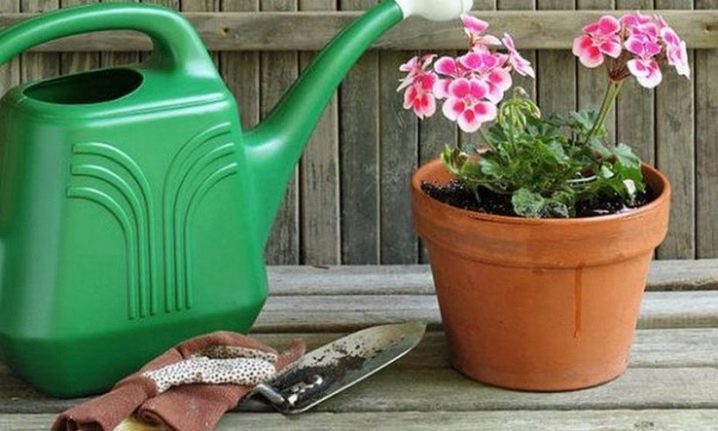
Nitrogen fertilizers are not needed during this period. If the bush is supplied with this very substance, it will direct its power to build up the green mass, and the flowering will stop. Such fertilizers are good for pelargonium in the fall, when it is prepared for winter.
In winter, the flower has a dormant period. At this time, the bush must be placed in a shaded corner with a temperature of about +14 degrees.
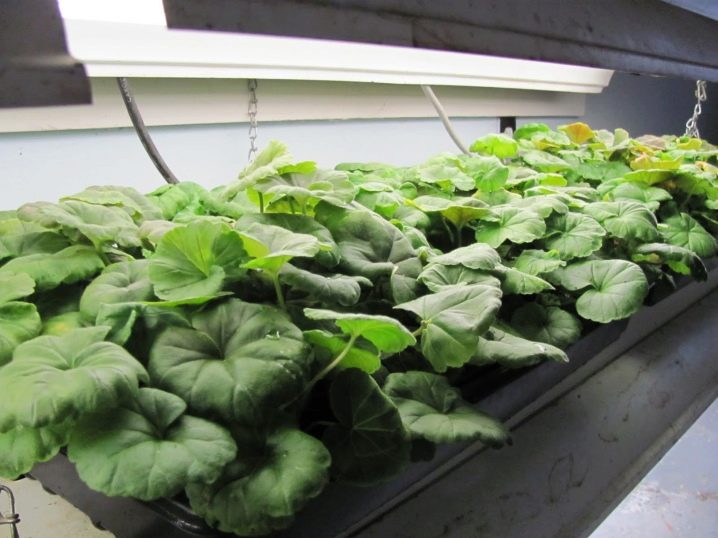
It should be borne in mind that pelargonium loves light, but not direct sunlight. If the light intensity is too high, the leaves of the plant dry out, and the stems turn yellow and become lethargic. Increased watering will not solve this problem.
So that burns do not appear on the leaf plates, the flower has a healthy appearance and blooms, it is necessary to create conditions for diffused lighting for it. This does not apply to outdoor bushes.
Leaves of home flowers should be periodically wiped from dust with a damp cloth, so that the plant does not start rot.
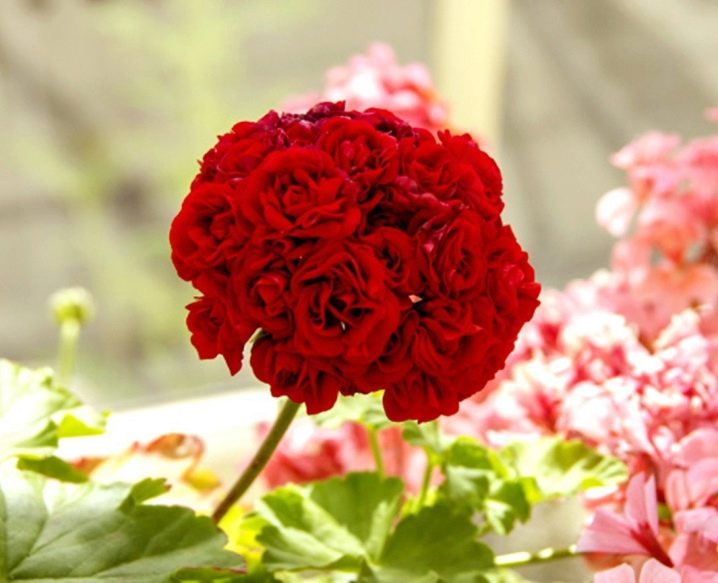
Diseases and pests
If pelargonium looks unhealthy, you will have to figure out the problem and take measures to return the joyful, elegant look to the green pet.
- The leaves begin to turn yellow if the air in the room is too dry and there is little light - the bush needs to be rearranged to a more suitable place.
- The flower is lethargic - there is excess water in the root system. It is advisable not to water any longer.
- If the roses begin to dry out quickly, the plant kills the fungus. Can be treated with "Fitosporin" (twice at weekly intervals).
- The appearance of brown spots on the leaves indicates a bacterial infection. We'll have to transplant it into fresh soil, water it only in the morning and treat it with fungicides.
- If an aphid or whitefly has settled on a bush, this can cause the death of the flower.To avoid this, you need to treat it with insecticides.
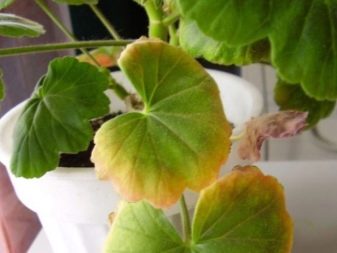
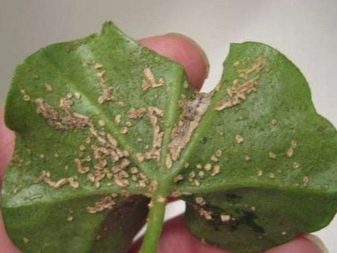
With the exception of some varieties, pelargonium does not require much effort for its use. Experienced growers easily cope with problems in its maintenance and pest control. The beauty of the roses that this flower bestows on justifies efforts to keep the plant healthy.
See below for more details.































The comment was sent successfully.